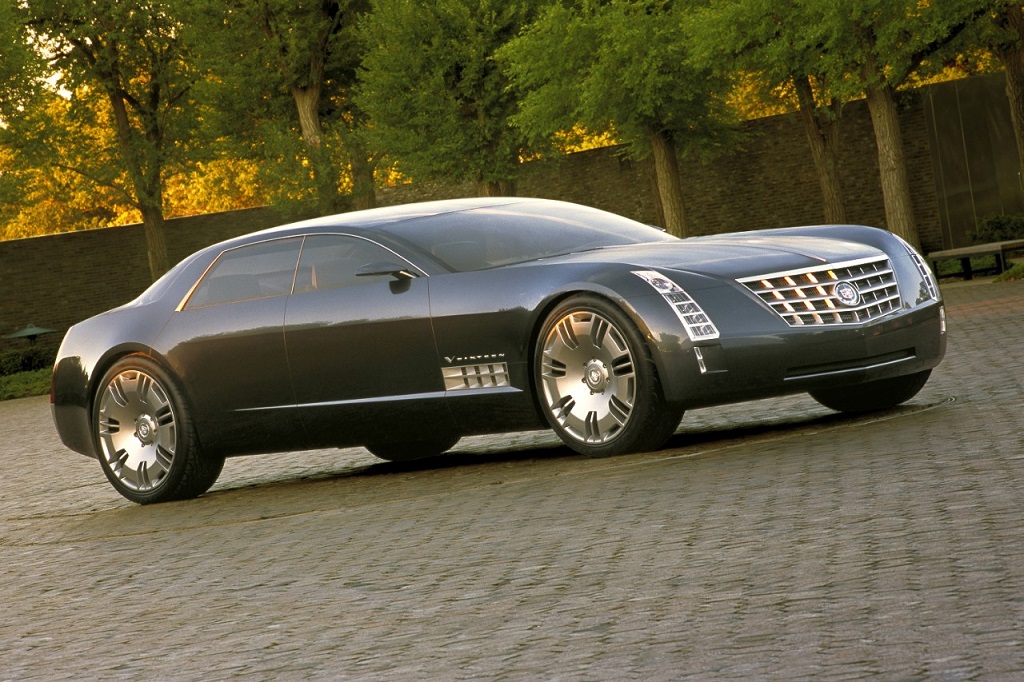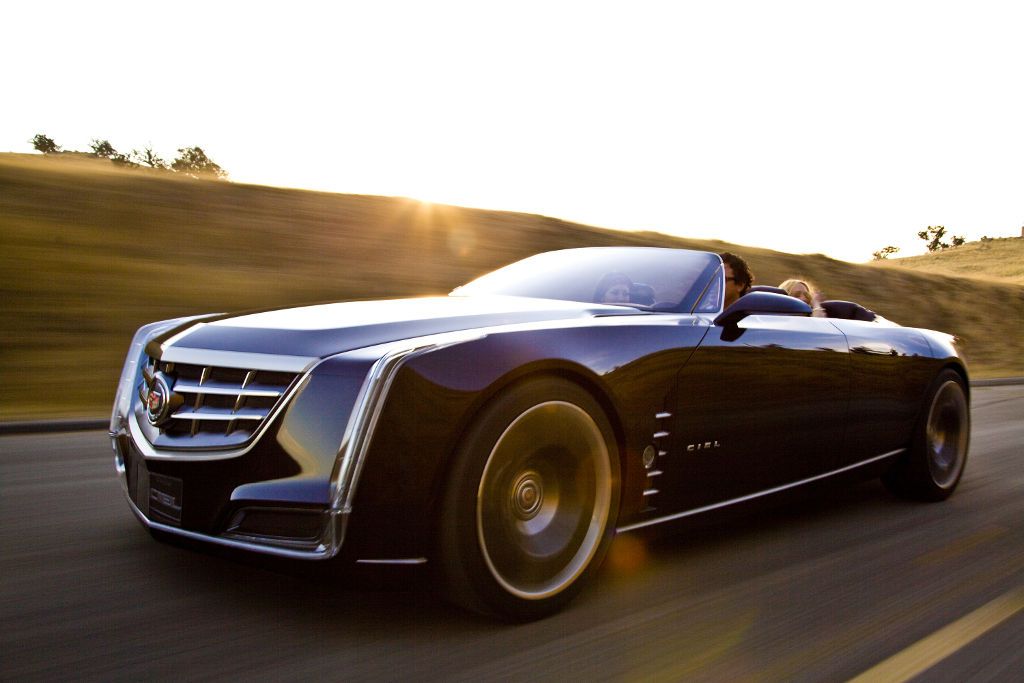A Chicago Auto Show Retrospective
There is less than a week to wait for the 2013 Chicago Auto Show! This year's show carries much cause for anticipation; Detroit has already given us a preview of the big stars, like the Corvette Stingray and Cadillac ELR. Urban Gear Works is obviously looking forward to the new Jeep Grand Cherokee, but we're also hoping to spend some time with the next generation Volkswagen Golf, the Dodge Dart, and the Porsche Cayenne, among others.
However, I'd like to take this opportunity to look back. This year, it will be twenty years since my parents picked up a small boy from school, and drove him into the city for his very first auto show. The opportunity to stay up late would have been enough for most children, but for me, a boy with four suitcases full of Matchbox cars (That should say something in itself - not Hot Wheels, but Matchbox!) who'd spent the entirety of his short life going to car shows and helping his dad around the garage, this was better than Disney World, and bigger than the Super Bowl. Meticulously polished cars of every make and model were parked on spotless plush carpeting, gleaming in the overhead lights of (the old wing of) McCormick Place, and I got to sit in them - in the driver's seat! In 1993, the internet was barely more than text, so every new car was accompanied by a magazine-sized booklet packed with glossy photos of every trim level and wheel option. Even better for a boy with a monthly income of about eight dollars, they were all free. I made it my goal to carry off a brochure for every manufacturer at the show, and in the following weeks I would sit on the floor of my room with all the booklets dumped out in front of me, memorizing every specification. Most memorable of all, though, were the concept cars that looked like they rolled right out of my Saturday morning cartoons, rotating on elevated displays beneath neon signs and giant TV screens. So, from 1993 to 2012, here are a few of my favorite concept cars:
Ford Mustang Mach III (1993) This is the first concept car I can remember - it's this car that allows me to date my first auto show visit. In reality, it was a two-seat, open top, highly-stylized preview of the next-generation Mustang. What I remember it for, though, was its eye-searing orange paint, and styling that, at the time, made me want to know all about it as soon as I saw it.
Ford GT90 (1995) The GT90 was built as a modern interpretation of the legendary GT40 race car. The simple, white paint served to show off the sharply creased lines of the carbon fiber and ceramic bodywork. At the time, there was some joke about just how many triangles were could be found in the lines of this car. More stunning than the design, though, was the engine. Built from two Modular V8s (this engine in its natural form would also power the Mustang Cobra) and force-fed by no less than four turbochargers, the GT90's V12 was said to be capable of over 700 horspower. I was still a few years short of my driver's license when this car was new, but I remember my friend had a poster of it in is his bedroom (the true test of any dream car) and I still have a bookmark with a picture of the GT90. If Ford had built this car, it would have definitely been a world-class supercar of staggering performance.
Chrysler Atlantic (1995) Chrysler may be the smallest of Detroit's Big Three, but their concepts are always a class apart. (There's a great gallery of Chrysler concepts at Autoblog.) This design is almost 20 years old, but if Chrysler announced tomorrow they were building the Atlantic, I'd be in line to buy one. It wasn't hard to build such a beautiful design, given that Chrysler's designers started with Bugatti Type 57 Atlantic, but the execution was timeless. The gold paint and chrome wheels shimmered in the show lights like a glass of champagne. It had an inline eight-cylinder engine, something not seen in an American automobile in half a century and recalling the luxury of the Jazz Age. In 1995, there was an added aura of wonder to this car, and every concept to come out of Chrysler. The Dodge Viper had started production only a few years earlier, and it too began as a concept that no one believed would be built. Another seemingly outrageous concept, the Plymouth Prowler, was already destined for reality. In the early nineties, no design seemed "too far", and every Chrysler concept carried the excitement that it could be on dealer lots next year.
Ford Indigo (1996) The Plymouth Prowler didn't just make concepts from Auburn Hills seem closer to reality. The Big Three are no stranger to one-upmanship, so it seemed believable in 1996 that the Indigo ("Indy-go") could be Dearborn's answer to the open-wheeled Prowler. Essentially a road-going, two-seat Indy car, the Indigo was powered by a V12 that would evolve to power Aston-Martins in the years to come. This car, too, passes the dream car test: I clearly remember keeping my homework in a folder with a neon red Indigo on the front.
Pontiac Grand Prix by Cynthia Rowley (1998) This one is for my wife. In 1998, GM gave some of its models to prominent fashion designers to decorate as they saw fit, with the intention of raising money for charity. A blue-and-green plaid Grand Prix was one result. I've included this car because it makes such an interesting counterpoint to all the angular, overpowered cars I remember most vividly. My wife had pictures of this car in her room when she was younger, even though she didn't know a thing about it. I think this just proves that the auto show isn't just a place for fanatics, but that everyone can find something special.
Dodge Razor (2002) Though the Viper had been in production for almost a decade by 2002, there was still a feeling that Chrysler Corporation could build anything, further reinforced by cars like the Prowler and forthcoming Crossfire. The Razor seemed like a natural fit, and a worthy adversary to the Pontiac Solstice concept on display at the other end of the show floor. The Mazda Miata had already enjoyed a decade of success so it seemed very possible that there might be room in the market for more four-cylinder, rear-wheel-drive, two-seat coupes. The Solstice made it to production, but the Razor never did. It's too bad, as it shared the same turbo-four powerplant that made the SRT-4 a street terror, but in a classic rear-drive layout.

Source: © GM Corp
Cadillac Sixteen (2003) Wow. I was in college when the Sixteen toured the auto show circuit, but it made me feel like I was back at my first show, unable to believe such a car could even exist. This was a car that really could have made Cadillac the "Standard of the World" again. The number of production cars with 16-cylinder engines in all of history can probably be counted on two hands, and here was a long, low, swept back Caddy powered by an engine said to be capable of over 1,000 horsepower. Despite the freight-train power figures, the engine featured variable displacement, making it effectively a four-cylinder during light driving. The notion that it was built with even a consideration for economy, and the fact that this glittering monolith was actually functional, made it seem like production was just over the horizon. After all, "Maximum" Bob Lutz, the man who made the Viper reality, was in charge of GM at the time. Mr. Lutz did give us the CTS-V, but sadly, this $100,000 Cadillac wasn't to be. I had genuinely planned to snag one off a used car lot sometime around 2020, too.
Saturn Curve / Chevy Nomad (2004) These siblings to the Pontiac Solstice were shown at the time of the Solstice launch as potential platform-mates. The Nomad had a front clip that is still one of the best takes on the original Corvette I've seen. The Nomad, true to the heritage of the name, took the two-seat roadster platform of the Solstice and turned it into a shooting brake. I'm always amazed GM found no market for this design; I think it would have paired nicely against a Mini Cooper. The Curve, on the other hand, had a distinctly Saturn-y look, but the wrap-around rear window and 2+2 seating would have diversified it enough from its siblings to make a solid business case. While I wish both of these had been built, the Solstice did also give rise to the Saturn Sky, which was better looking than either concept, if not as unique.
Chrysler ME-412 (2004) The Soviets had a phrase during the days of Stalin, the gist of which was "you're so good, they'll bury you in an unmarked grave". Such was the fate of DaimlerChrysler's ME-412. ME-412 stood for "mid-engine, 4 turbos, 12 cylinders". The ME-412 was meant to take Chrysler to levels it had never dared reach before, carried in part by the technical expertise of new parents Daimler-Benz. It was created entirely of carbon fiber, wrapped around a quad-turbo Mercedes V12, and could supposedly reach speeds in excess of 200mph. At the time, Chrysler executives publicly stated that it was not a concept, but rather a prototype, and that it would absolutely reach production. However, the ME-412 was too good. The car's performance capacity, and the speed with which it was designed and built, proved an embarrassment to parent Daimler's other halo car, the Mercedes-McLaren SLR. As a result, the project was terminated, and the "prototype" is just another footnote in the long list of cars that could have been.
Chrysler Firepower (2005) Anyone who followed the Urban Gear Works Twelve Days of Christmas knows how I feel about the Firepower. This was another running, driving concept from Chrysler that seemed so certain. Using a Viper chassis, the Firepower replaced the big snake's V10 with a Hemi V8. It was meant to be a luxury-sport model for Chrysler, and the long hood, fastback roof, and sumptuous interior were stunning. With the Viper back for 2013, I still think there could be some hope for this concept.

Source: © GM Corp
Cadillac Ciel (2012) This, too, is a car we've featured previously on Urban Gear Works. The Great Recession meant that for several years, there were very few concept cars to be seen. Automakers just didn't have the funds to spend on one-off design studies. However, in 2012, Cadillac returned with the most stunning concept since the Sixteen. This four-door convertible is the apex of the "Art & Science" design theme that was just beginning with the Sixteen, but it also combines hallmarks from great Cadillacs of the past. Most of the cars on this list have already passed out of the realm of possibility. They aren't going to be built - time, money, or technology made them unfeasible, and now they are just museum pieces. The Ciel, though, is different. The fact that Cadillac is still looking to build a flagship model above the XTS is a very badly kept secret. The Ciel still has a chance at reaching production.
 Chicago
Chicago




